We’ve known for years that Apple is working on its first augmented reality headset, and now we know what it is: the Apple Vision Pro.
Vision Pro is an AR headset designed to run all your favorite iOS and iPadOS apps – plus a few of its own – plus unique features like 3D photo and video capture.
It’s also extremely expensive and won’t launch for months – and, even then, will only be available in the US at first.
Here’s everything you need to know about Vision Pro.
When will the Apple Vision Pro be released?
Apple unveiled the Vison Pro headset at its WWDC 2023 convention, devoting over 45 minutes to an in-depth hardware reveal.
Don’t think that means you can buy one: the helmet won’t go on sale until early 2024.
Even then, it will only be launched in the United States at first and will only be available at official Apple stores.
The company only says other countries will follow “later next year,” but it’s unclear exactly when or where.
How much will the Vision Pro helmet cost?
Prepare to be shocked: Apple’s first AR/VR headset is expensive.
When it launches, Reality Pro will start from $3,499 in the US – so far, no other currencies have been confirmed.
We don’t know what pricing options there will be, but Apple has talked about the modularity and customization of the design, so expect to be able to pay a premium for different headband options, plus the Zeiss prescription lens option, rather than having a range of processors or storage to choose from.
$3,499 is expensive even by VR standards. That’s more than double the $1,499/£1,499 Meta Quest Pro and the equivalent of seven of the upcoming $499 Meta Quest 3 headsets.
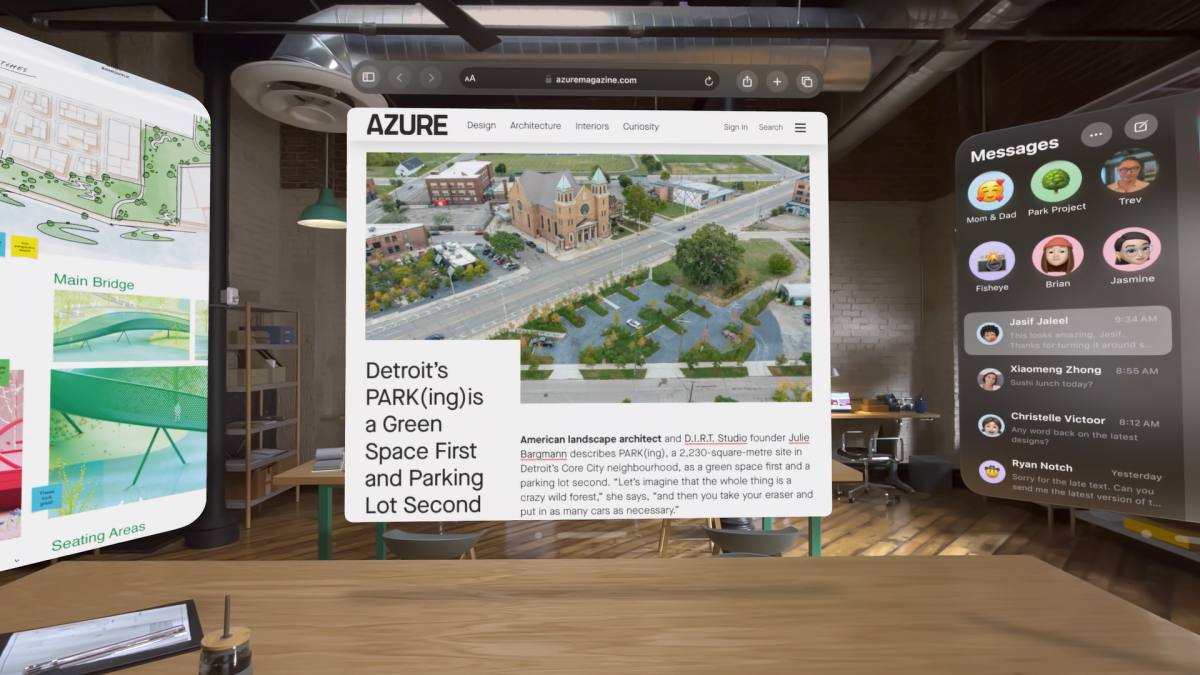
Apple
The saving grace is that, according to Bloomberg, Apple may be working on a much cheaper headset for release in 2024. According to The Information, Apple would like to release a more affordable headset, although “affordable” in Apple’s eyes is similarly priced to that of the Meta Quest Pro.
It’s said to achieve this by using lower-tier components than the high-end headset, with a lower-resolution screen, less processing power, and possibly even the omission of the low-latency audio chipset.
Ming-Chi Kuo thinks affordable tracking is further away, though. He reports that Apple is working on a pair of successors, “one high-end and one low-end”, but they won’t arrive until 2025.
What to expect from Apple’s AR/VR headset
It may be pricey, but the Vision Pro is unlike any other headset on the market in terms of design or specs.
Design
In terms of overall design, the helmet looks like a cross between the Meta Quest Pro and a ski goggle, with lightweight fabrics and materials that should help maintain a comfortable fit over long sessions.
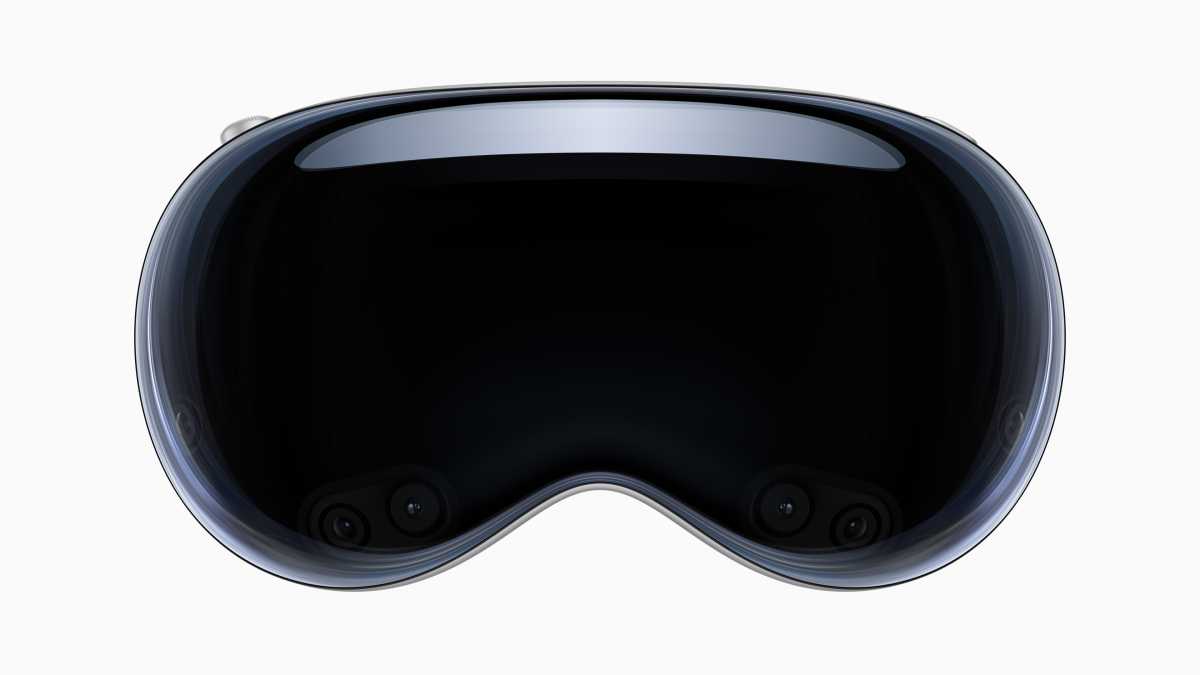
Apple
The front of the helmet is a 3D curved laminated glass sheet that attaches to the aluminum alloy frame. It’s a simple design, with a single button, digital rotating crown, and vents for cooling.
Next is the lightweight seal, which will come in “a range of shapes and sizes”, and bends to conform to your face for a comfortable and precise fit.
Next are the flexible straps that hold the two audio units – or “audio pods” as Apple calls them – that you position to keep the speakers close to your ears.
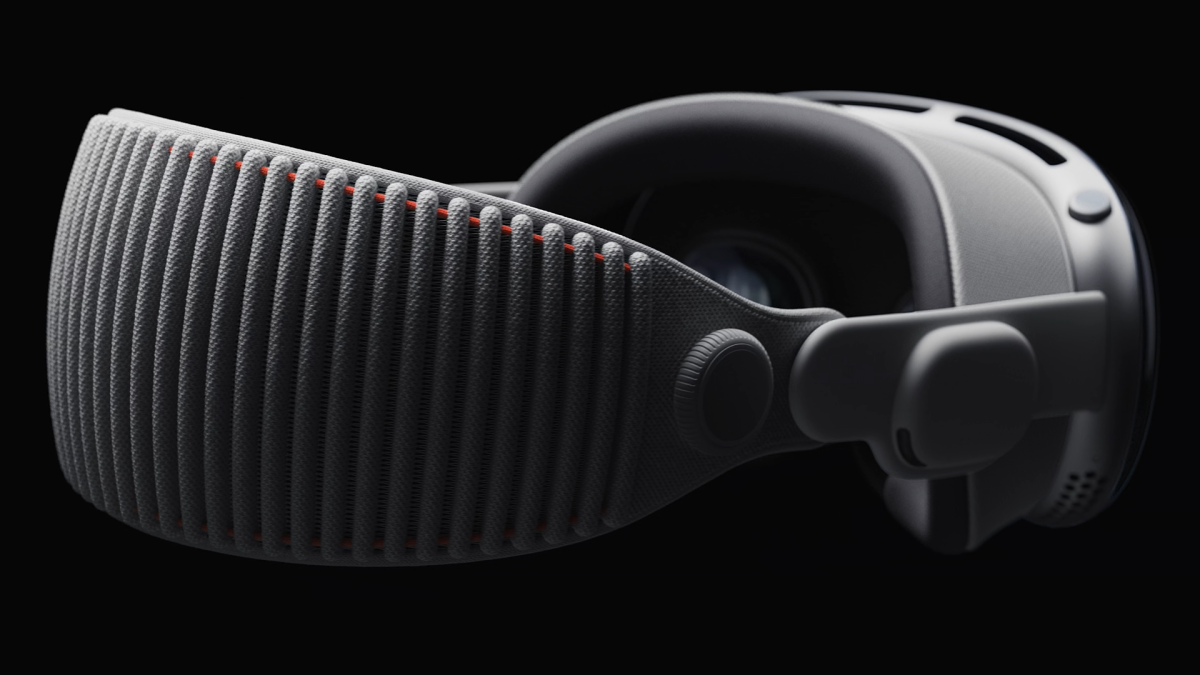
Apple
Finally, a 3D knit headband has a stretchy, ribbed structure for your enjoyment. It attaches to the rest of the headset with a simple click mechanism, so it should be quick and easy to swap out for a different size or style, much like on the Apple Watch. There is also an adjustment dial for more precise adjustments.
Early leaks suggested the headset wasn’t designed to work with people who wear glasses, and sadly, that appears to be the case. Apple’s solution is (unsurprisingly) expensive: custom Zeiss optical inserts that magnetically attach to headset lenses, available to fit a range of prescriptions. There’s no word on pricing here, but don’t expect it to be cheap.
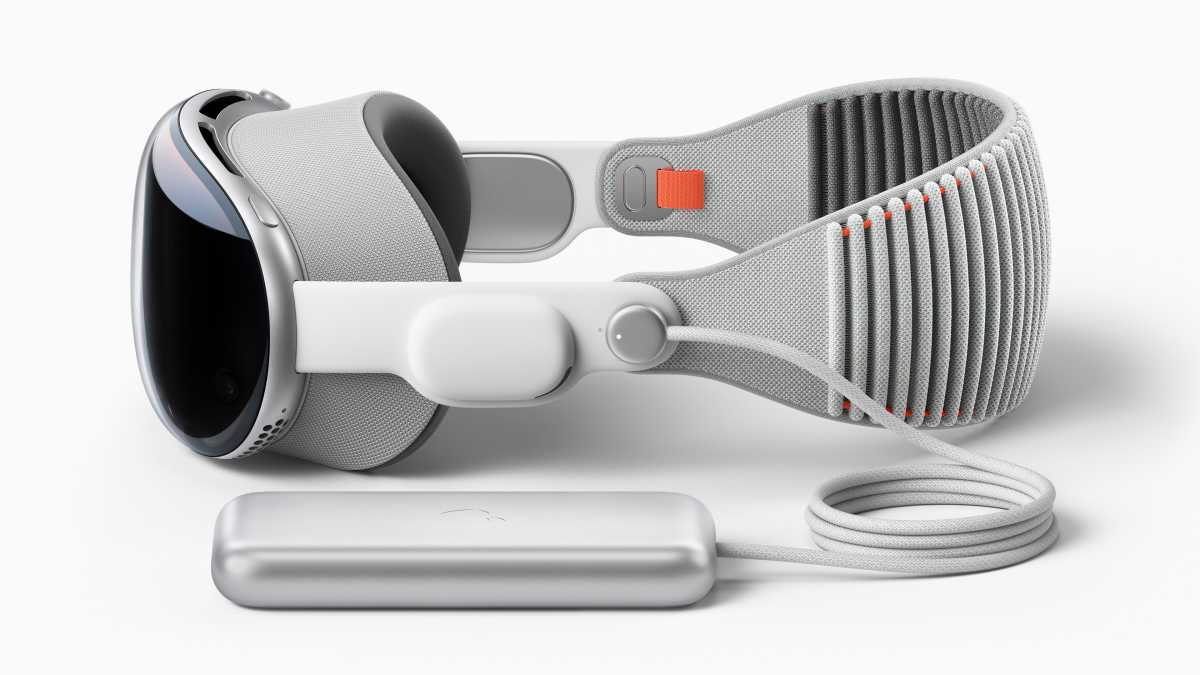
Apple
So far, Apple hasn’t specified the weight of the headset, but admitted that to keep the weight low, it removed the battery from the headset and placed it in an aluminum battery that attaches with a “cable soft weave”. Beautiful.
The most unique thing about the Vision Pro’s design is what it doesn’t have: controllers. Apple offers you to control the headphones with just your eyes, hands and voice, so there are no potentially cumbersome controls to master.
Specifications, tracking and performance
The heart of the Vision Pro hardware is one of Apple’s M2 chips – found across its Mac range, including the new 15-inch MacBook Air revealed alongside the headset.
This guarantees plenty of power, almost certainly more than what’s currently found in any rival AR headset.
The M2 is associated with a new chip operating in parallel: R1.

Apple
This silicon is designed for real-time sensor processing, handling inputs from the headset’s 12 cameras, five sensors and six microphones while striving to keep latency as low as possible – down to 12ms according to the company. , less than the time it takes you to blink.
All this tracking is also complicated. The cameras are used both to provide you with a visual feed of the world and to track your eye and hand movements for controls, with all sensors combined to make the view from the headset as natural and immersive as possible.
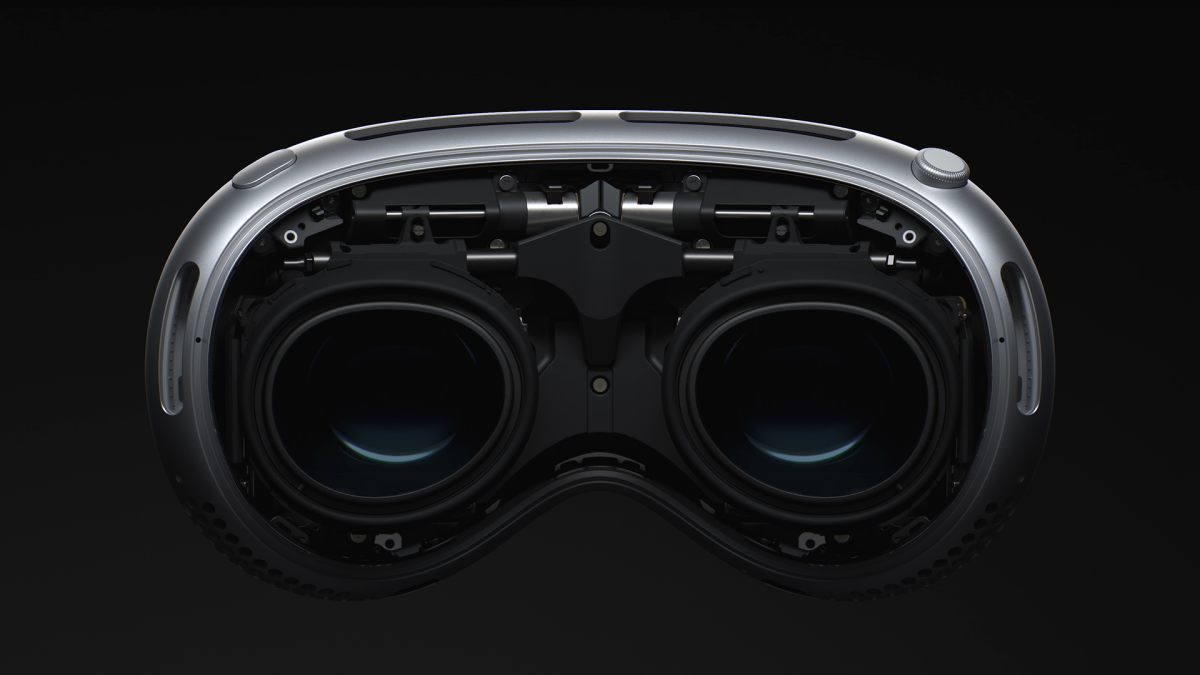
Apple
The screens are equally impressive. There are 23 million pixels across the two microOLED display units, each the size of a postage stamp. This means each eye gets a screen with higher resolution than a 4K TV, allowing you to watch 4K content and read small text with clarity.
What is most surprising is that the helmet actually contains a third display – outside. This curved OLED panel is designed to show your eyes to people in the room with you, using a feed from cameras inside the helmet.
The screen can react to what you’re doing – going opaque when you’re in fully immersive content, for example – or to the people in the room, bringing your eyes into full view whenever someone approaches to talk to you .
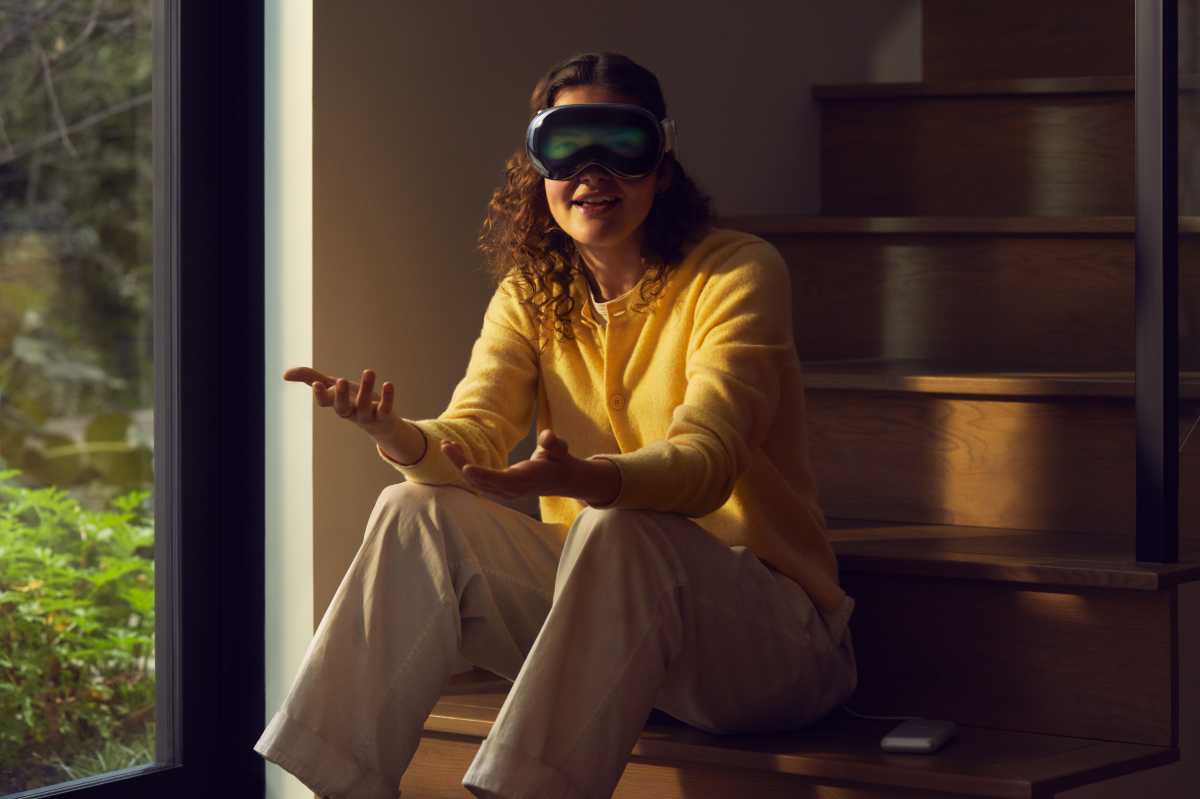
Apple
When it comes to audio, the two “audio pods” each have two drivers and use audio ray tracing to tune their “ambient spatial audio” to your exact room size, layout, and materials.
The downside to all that power is battery life. While Apple claims these are “all day” headphones when plugged into the mains, if you’re on battery power they only last up to two hours. That means it doesn’t appear to be travel-ready or ready-to-use technology just yet, despite Apple marketing to that effect.
Software and features
So for all this hardware, what does Vision Pro actually do? TO DO?
Well, at its core, the software – dubbed visionOS – lets you open all your regular apps on a private screen, including multitasking, so you can browse the web, work on a presentation, whatever looks gigantic display.
Apple says “hundreds of thousands” of iOS and iPadOS apps will be compatible with the hardware, along with a dedicated app store for software designed specifically for Vision Pro – including a Disney+ app that Disney CEO Bob Iger, came to WWDC to show.

Apple
You can see these apps floating around the room you’re in – or, technically, a camera feed of that room – or you can replace it with immersive 3D environments if you prefer working in the rainforest or the cockpit of an X-Wing.
The headset lets you browse photos or watch video content, and automatically dims your surroundings. There’s some neat effects here, too – panoramic photos will envelop you, 3D movies like Avatar will display to full effect, and new custom Spatial Audio technology delivers surround sound.

Apple
You can even use the headset to create 3D content, but we don’t know who will. You have to wear the headset while you take 3D photos or record 3D video, adding a dystopian edge to Apple’s vision of capturing treasured family memories in three dimensions.
Naturally, the headphones can sync with your iPhone, iPad or Mac, so all your content and accounts are transferred.
Even more impressively, you can wirelessly stream content from other hardware. Simply staring at a MacBook screen can transfer the contents of its screen to the headset interface, allowing you to privately work on files while the laptop screen remains blank.
For the most part the headset is controlled by eye tracking, gestures and voice commands – including dictation for messaging – but if you need to get the job done you can also connect a Bluetooth keyboard or mouse for a more traditional experience. .

Apple
You can even use the headset for FaceTime calls, but with a catch: Since no one wants to see your face behind a visor, Apple instead uses eye-tracking technology to render a 3D digital avatar of you that recreates your facial movements. exactly (well, ish – even Apple’s WWDC demo wasn’t entirely convincing here).
As for security, Apple introduced Optic ID, an eye-scanning technology that recognizes the unique patterns of your iris. It works for Apple Pay, App Store purchases, and password autofill as you’d expect, while providing convenient privacy for shared headset users.
Table of Contents







